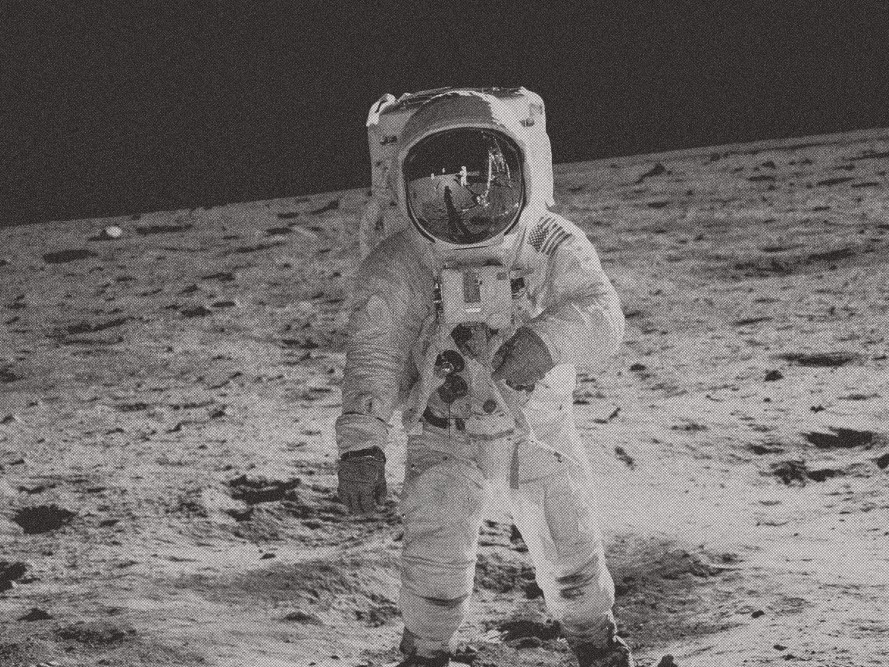Amid resolution planning to start the new year fresh, there is no time like a transition from one year to the next to look forward, and nothing epitomizes a forward-looking viewpoint more than the immortal words of Patrick Stewart (and other Star Trek captains alike), “Space: The Final Frontier.” In the spirit of this forward-looking perspective, the time is ripe to talk about the economics of space.
In a previous Invested article, I talked about the intricacies of commodities markets and how the complex network of global interdependencies underlies the fundamental supply and demand drivers in said commodities markets. And while a reference I had made to the potential economic impacts of the “alien contact of 2025” is a little facetious, the impact of space-faring endeavours on the economic sphere is far from the distant-future sci-fi concept that it once was. In fact, this is enough of a topical area of interest that the National Academy of Sciences in the U.S. has released a special issue in the journal PNAS related to the economics of space just this month. (Corrada, Cropper, & Rao, 2023)
I’m sure we are all familiar with the space race between the U.S. and the Soviet Union in the 1960s, which culminated in a moment of immense American national pride when the star-spangled banner was planted on the surface of the moon in 1969. But while many people might struggle to identify anything of note related to space following that, the story certainly didn’t end there. In fact, there has been a glut of continuing developments in space-related endeavours of impressive merit. From the progressive development of the International Space Station (ISS) to the Space Shuttle program (establishing the first reusable space vehicles), to numerous scientific projects like the Hubble Space Telescope program and the recent James-Webb Space Telescope, the list goes on and on. However, public debate on space programs always tends to come back to the age-old question of dollars and cents: why invest in space, when there is enough to invest in down here?
Historically, the public narrative for investment into space exploration has largely revolved around the spillovers and product offshoots from fundamental research and development that occurred during the development (and continued) improvement of the space program (typically NASA). And while the list of offshoot products is nothing to balk at – including the technology behind camera phones, LEDs, portable computers, athletic shoes, among many others – this list often focuses on tangential impacts of innovation and can miss a broader picture of the overall contributions of space-related products and infrastructure to the lives of modern humans. For instance, it’s hard to overstate the impact that satellite-based communication networks and GPS have had on the world.
Extrapolating from this, one could imagine that further development of the space sector could offer other novel innovations that might spur economic growth worldwide. For instance, a common theme in motivating further space-related development is in resource/mineral mining, but space-based solar power farms and the off-earthing of manufacturing facilities also offer tangible utility of space, not to mention the uniqueness of performing fundamental scientific and materials research in the zero-gravity and vacuum environment in space. (Corrada et al., 2023)
While these goals may seem like starry-eyed fantasies out of a sci-fi show, concrete steps – and real capital outlays – have already been made in these directions. For instance, the establishment of the Commercial Orbital Transportation Service in the mid-2000s – formalizing a shift in NASA’s views towards the private sector for support in the transportation of supplies to the ISS – has led to a variety of private organizations (like SpaceX) undertaking the task of privatizing Earth-to-space transportation and reduced the cost of resupplying the ISS by roughly a factor of two. (Weinzierl, 2023) In addition, the oft-stated primary goal of Jeff Bezos’ Blue Origin project is to eventually migrate heavy industry large-scale manufacturing facilities off of Earth, while the private sector has also contributed many billions of dollars in launching low-Earth-orbit (LEO) large-scale constellations of satellites – such as the Starlink division of SpaceX or Project Kuiper from Amazon – towards the purpose of improving global telecommunications.
While all this expansion of humanity into space paints a picture of rosy supplementation to an already humming global economy, it may actually serve as a tangible means to stave off a deeper issue. The state of so-called secular stagnation is what some economists – including the former secretary of the U.S. treasury Lawrence Summers – fear that advanced economies may be presently veering into. Empirically, the real growth rate in OECD countries fell from 4.5% to 2.9% to 1.9% over the following 20-year periods, respectively: 1960-1979, 1980-2009, and 2010-2019. (Weinzierl, 2023) Fundamentally, the so-called secular stagnation hypothesis suggests that a slow economic outlook can over-incentivize savings relative to investment to such an extent that interest rates cannot drop low enough to significantly spur economic growth.
However, even the most starry-eyed among us must wrangle with some of the more practical aspects of large-scale investment and development of space. For instance, property rights and matters of sovereignty are uncertain in space. The Outer Space Treaty of 1967 provides the governing regulations for humans in space, which makes it clear that there is no legal appropriation of outer space by any sovereign nation, which tends to complicate the establishment of property rights. So, while the prospect of space-faring humans expanding our industrial prowess into the stars is still murky, what is hopefully clear is that an ongoing space race offers a far greater leap for mankind than a single step on the moon.
References
Corrada, L., Cropper, M., & Rao, A. (2023). Space exploration and economic growth: New issues and horizons. Proceedings of the National Academy of Sciences of the United States of America, 120(43), e2221347120. https://doi.org/10.1073/pnas.2221341120
Corrado, L., Grassi, S., Paolillo, A., & Silgado-Gómez, E. (2023). The macroeconomic spillovers from space activity. Proceedings of the National Academy of Sciences of the United States of America, 120(43), e2221342120. https://doi.org/10.1073/pnas.2221342120
Weinzierl, M. (2023). Expanding economic activity in space may offer a solution to secular stagnation. Proceedings of the National Academy of Sciences of the United States of America, 120(43), e2221347120. https://doi.org/10.1073/pnas.2221347120
DISCLAIMER:
This blog and its contents are for informational purposes only. Information relating to investment approaches or individual investments should not be construed as advice or endorsement. Any views expressed in this blog were prepared based upon the information available at the time and are subject to change. All information is subject to possible correction. In no event shall Viewpoint Investment Partners Corporation be liable for any damages arising out of, or in any way connected with, the use or inability to use this blog appropriately.

